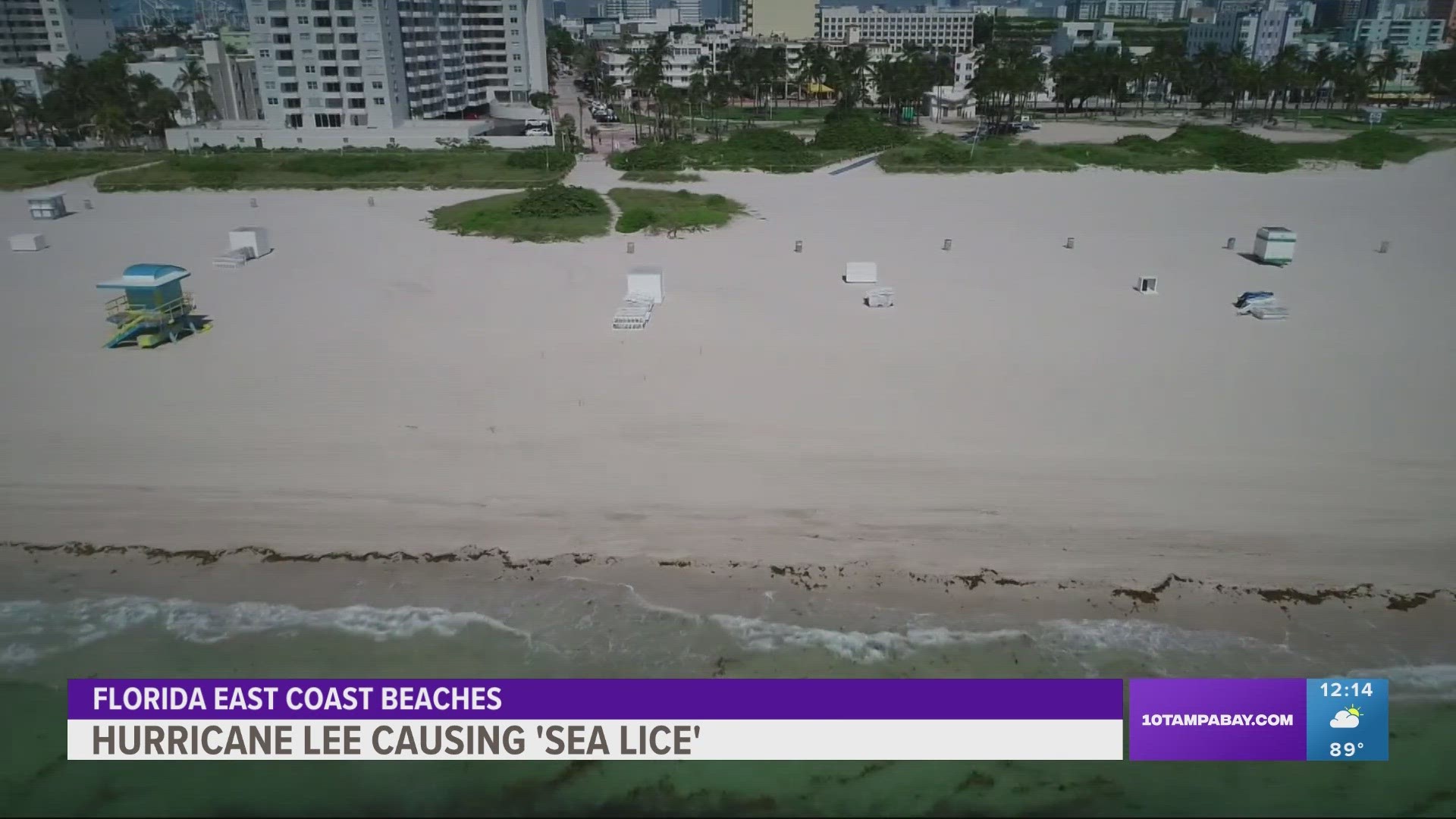PALM BEACH COUNTY, Fla. — Hurricane Lee may be far away from land but that didn't stop it from stirring up an itchy surprise at some Florida beaches.
Swimmers at beaches along Florida's East Coast have recently dealt with the return of "sea lice," according to Florida Today. Increased surf generated by the distant storm likely pushed in tiny creatures that caused the annoying symptoms.
Before you panic, these sea lice aren't like the head lice that kids get at summer camp. In fact, they aren't lice at all.
What is sea lice?
Known scientifically as seabather's eruption, sea lice refers to the red, itchy rash that some people develop under their bathing suits after swimming at the beach. It happens when the microscopic larvae from either thimble jellyfish or sea anemones get trapped under someone's bathing suit, according to a study published in the National Library of Medicine.
When pressure is applied — like when someone sits down on a towel — those invisible organisms release stringing cells called nemocytes that can cause itchy welts within hours.
How to treat sea lice
This itch typically goes away after 2-4 days but can linger for as long as two weeks, according to the Florida Department of Health. Some people may have more severe reactions such as headache, fever and nausea.
Health experts say any over-the-counter treatment to relieve itching, such as Benadryl or cortisone cream, should be helpful. Anyone with a severe reaction should contact their doctor.
At certain beaches, like those in Palm Beach County, signs will be posted when sea lice are present, so the best way to avoid it is by staying out of the water. Otherwise, swimmers should shower as soon as possible and remove their bathing suits. Bathing suits should then be washed thoroughly with detergent and heat-dried.
According to the health department, sea lice have been around since the 1900s along 250 miles of Florida’s southern Atlantic coast. After a 20-year absence, the problem reappeared in the mid-1980s.
"Sea Lice appears to be caused by shifts in the ocean currents, the highest incidence are in Palm Beach and North Broward counties, where the Gulf Stream passes closest to shore," health officials wrote.

